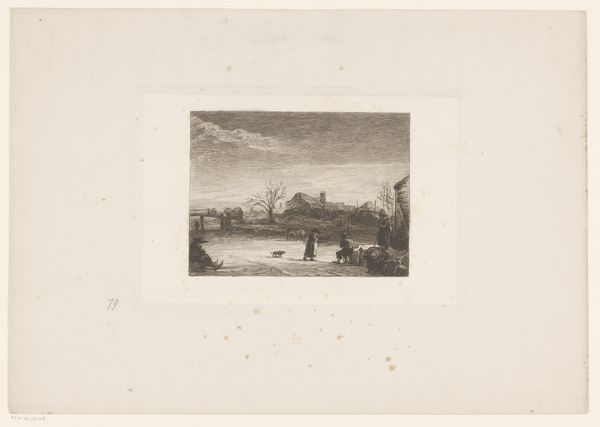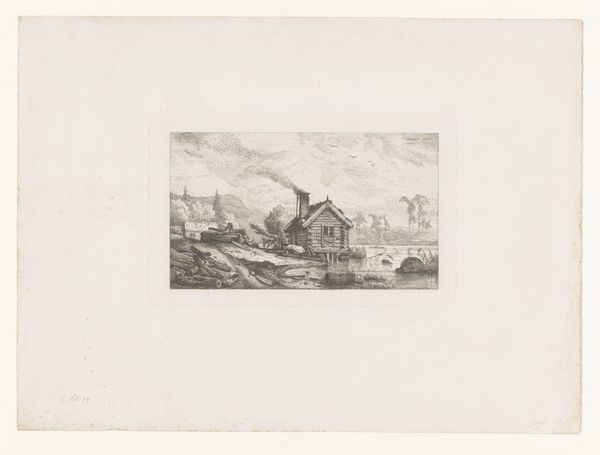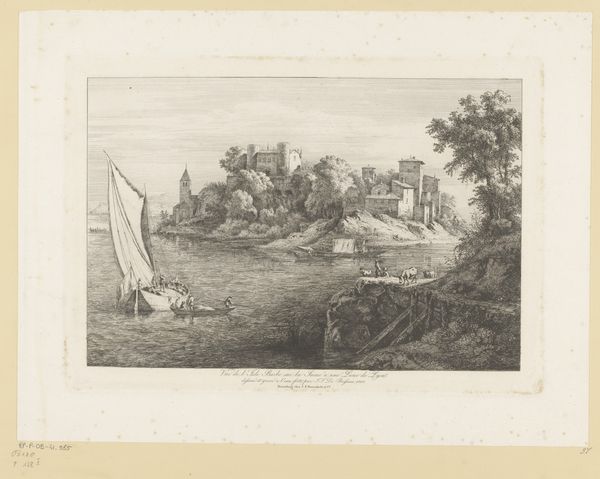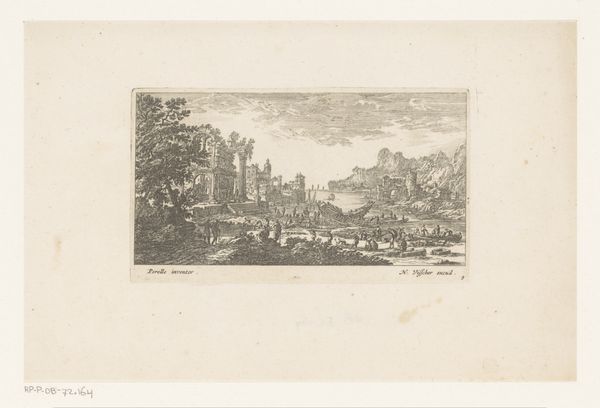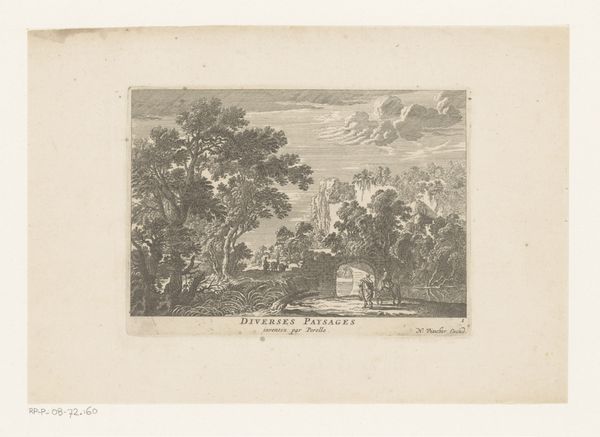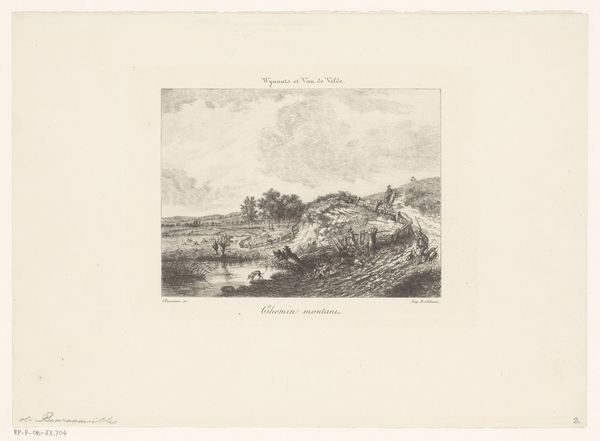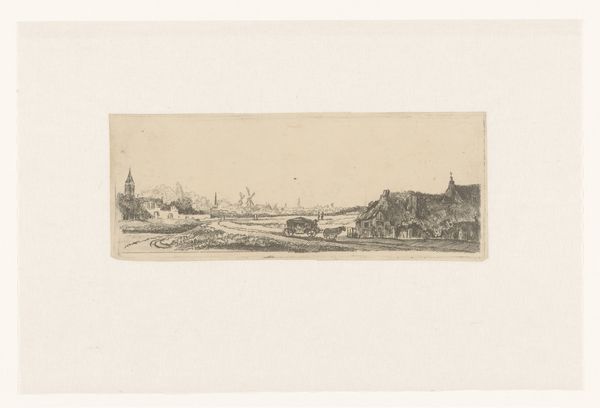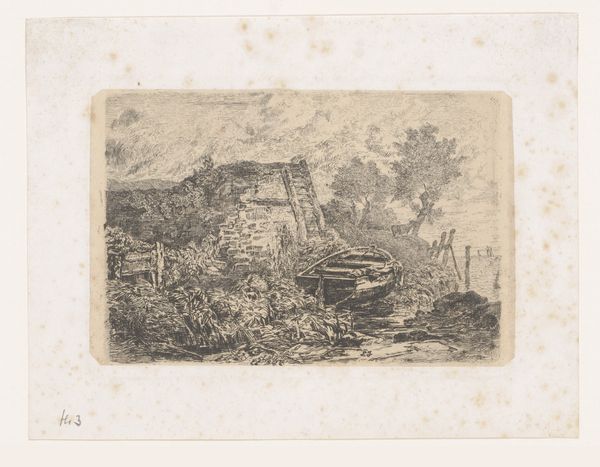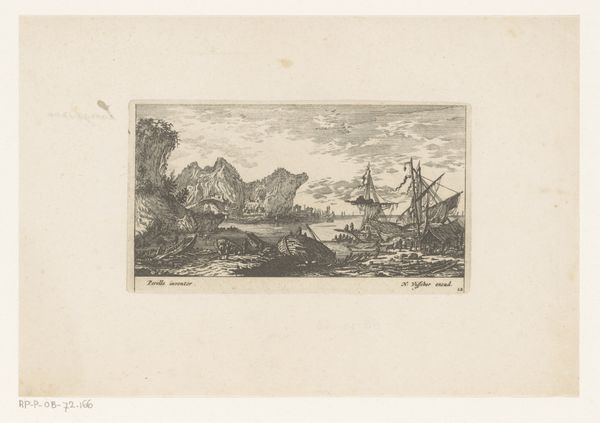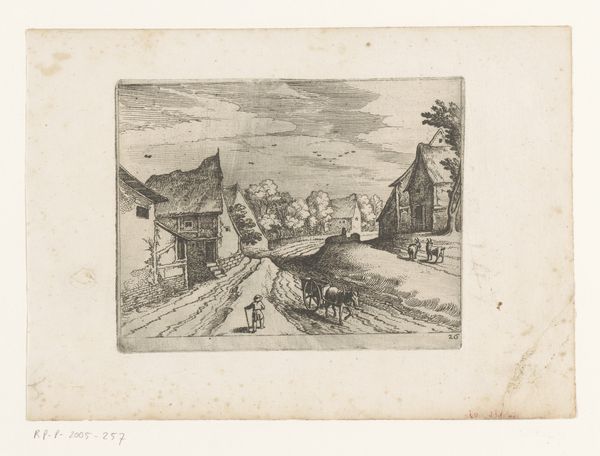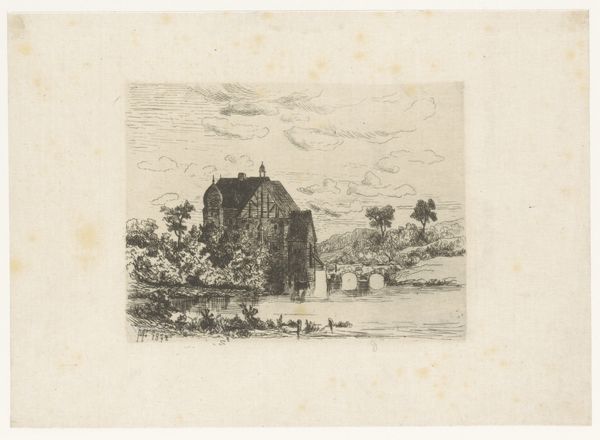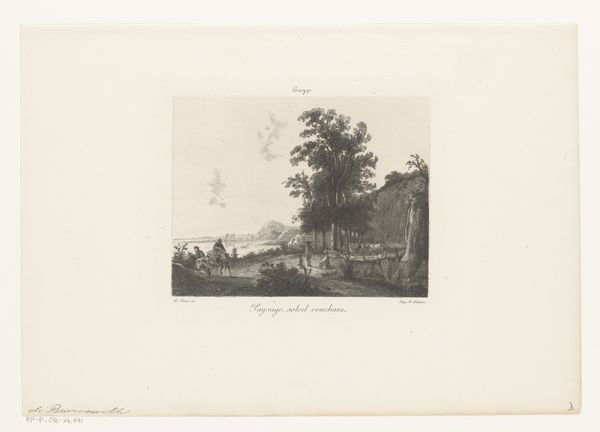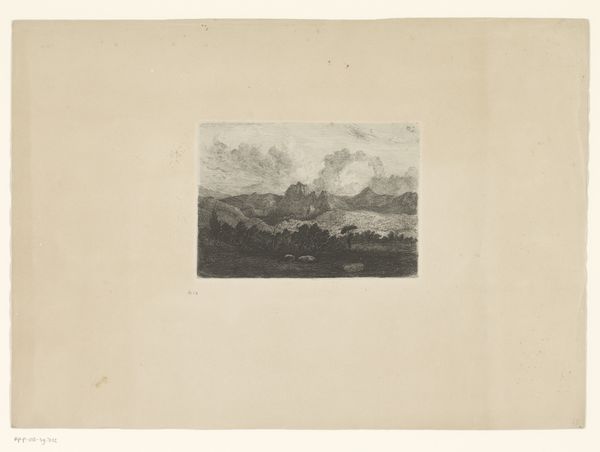
print, engraving
#
baroque
# print
#
old engraving style
#
landscape
#
pencil work
#
engraving
Dimensions: height 100 mm, width 175 mm
Copyright: Rijks Museum: Open Domain
This etching, Havengezicht, was made by Adam Perelle around the late 17th century. It is a print, so of course the primary material is paper, but its appearance is fundamentally determined by the metal plate from which it was printed. The image was carved into the metal with a tool called a burin. The incised lines hold ink, which is then transferred to the paper under great pressure. The result is a delicate, precise rendering of a harbor scene, complete with ships and architectural details. But how was the copperplate itself made? That’s where the real labor lies. Engraving is a highly skilled activity, demanding years of practice to master control of the burin, achieving subtle gradations of light and shadow. And though Perelle designed the image, it was Nicolaes Visscher II who actually engraved it, a division of labor common at the time. Next time you see a print, remember that it represents not just an image, but also a complex chain of production, involving both creative and technical skill. By attending to these processes, we can appreciate how different kinds of labor contribute to the artworks we value today.
Comments
No comments
Be the first to comment and join the conversation on the ultimate creative platform.
